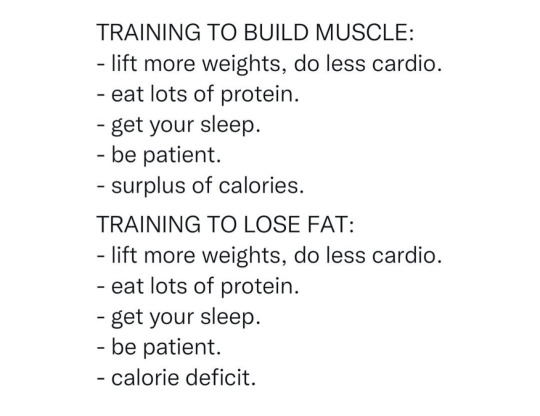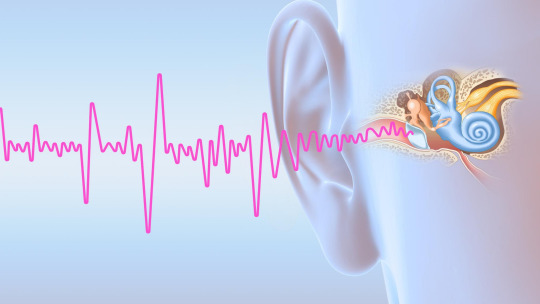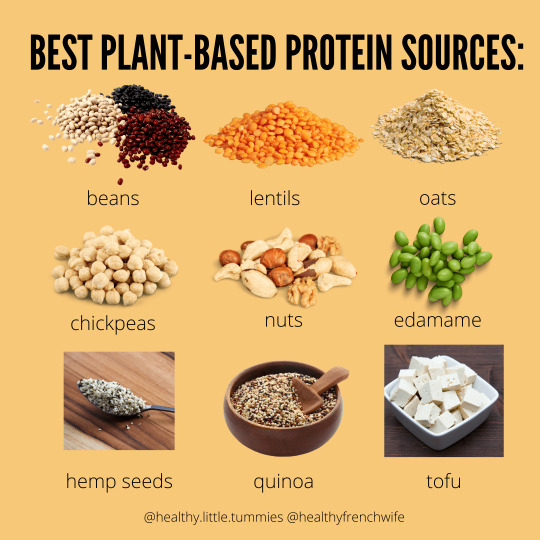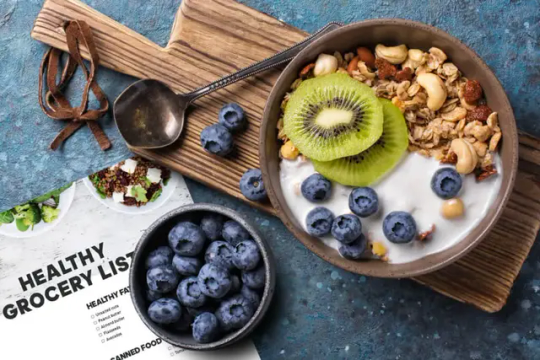#nutrition tips
Text

#fat loss tips#tumblr#fitblr#fat loss#weight loss journey#weight loss tips#healthy weight loss#healthlylifestyle#healthy living#weight loss#diet#nutrition tips#fitness journey#health journey#getting healthy#getting fit#lose weight tips#health & fitness#healthy habits#calorie deficit
871 notes
·
View notes
Text

Do you know how great peaches are for you? They are a great source for potassium & iron Peaches also help to improve digestion ,eye health & promote healthy skin.
#health#fitness#healthy living#weight loss#healthy#diet#healthy eating#healthy food#exercise#men's health#women's health#nutrition and fitness#nutrition tips#nutrients#nutrition#peach#peaches
7 notes
·
View notes
Text
Dealing with Eating Disorders: Anorexia and the Importance of Balanced Nutrition

Dealing with Eating Disorders: Anorexia and the Importance of Balanced Nutrition
Here's an overview:
Introduction to Eating DisordersSigns and Symptoms
Emotional Impact
Seeking Professional Help
Importance of Balanced Nutrition
Understanding AnorexiaSigns and symptoms of anorexia include:
Treatment for anorexia often involves a combination of:
Causes and Risk Factors of Anorexia
Signs and Symptoms of Anorexia
Diagnosis of Anorexia
Treatment Options for Anorexia
Cognitive Behavioral Therapy for Anorexia
Family-Based Treatment (FBT) for Anorexia
Medication and Nutritional Therapy for Anorexia
Supporting a Loved One with Anorexia
Conclusion and Recovery from Anorexia
Introduction to Eating Disorders
Eating disorders are complex mental health conditions that can have serious physical consequences. As someone who has struggled with anorexia, I understand the challenges and the importance of raising awareness about these issues. When it comes to eating disorders, it's crucial to remember that they are not just about food or weight; they often stem from deeper emotional and psychological struggles.
Signs and Symptoms
Restricting Food Intake: This can involve skipping meals, limiting caloric intake, or avoiding certain food groups.
Preoccupation with Weight and Body Image: Constantly checking weight, body measurements, or appearance in the mirror.
Physical Changes: Rapid weight loss, fatigue, dizziness, hair loss, and irregular menstruation in females.
Social Withdrawal: Avoiding social gatherings that involve food or making excuses to avoid meals.
Emotional Impact
Living with an eating disorder can be isolating and overwhelming. It's common to experience feelings of shame, guilt, and worthlessness. I found that seeking support from loved ones, therapists, or support groups was instrumental in my recovery journey. Remember, you are not alone, and it's okay to ask for help.
Seeking Professional Help
If you suspect you or someone you know is struggling with an eating disorder, it's essential to seek help from a healthcare provider. A comprehensive treatment plan may include therapy, nutritional counseling, and medical monitoring. Remember, recovery is possible with the right support and resources.
Importance of Balanced Nutrition
Nutrition plays a crucial role in recovery from anorexia. Working with a dietitian to create a balanced meal plan can help restore physical health and promote mental well-being. It's vital to nourish your body with a variety of nutrients and food groups to support healing and recovery.
As we delve deeper into understanding anorexia and its effects, it's essential to approach these topics with empathy, education, and a commitment to breaking the stigma surrounding eating disorders.
Understanding Anorexia
I have struggled with anorexia in the past, and I know firsthand how challenging it can be. Anorexia is not just about wanting to be thin; it is a serious mental health disorder that can have severe consequences if left untreated. People with anorexia often have an intense fear of gaining weight, distorted body image, and a relentless pursuit of thinness.
Signs and symptoms of anorexia include:
Significant weight loss: An individual may have a body weight that is significantly below a healthy range for their age and height.
Restrictive eating habits: Constantly monitoring food intake, avoiding certain foods, and restricting calories.
Intense fear of gaining weight: Obsessively weighing themselves and expressing intense anxiety about weight gain.
Distorted body image: Seeing themselves as overweight even when underweight.
Physical symptoms: Fatigue, dizziness, fainting, and hair loss.
If you suspect that you or someone you know may have anorexia, it is crucial to seek help from a healthcare professional. Anorexia can have serious health consequences, including organ damage, osteoporosis, and in severe cases, it can be life-threatening.
Treatment for anorexia often involves a combination of:
Nutritional therapy: Working with a registered dietitian to create a meal plan that ensures adequate nutrition.
Therapy: Cognitive-behavioral therapy (CBT) or other forms of psychotherapy can help address underlying issues and change harmful thought patterns.
Medical monitoring: Regular check-ups with healthcare providers to monitor physical health and address any complications.
Remember, recovery from anorexia is possible with the right support and treatment. It's essential to reach out for help and not try to battle this disorder alone.
Causes and Risk Factors of Anorexia
I. Causes of Anorexia:
Genetics: Some studies suggest that genetics play a role in the development of anorexia. If someone in your family has struggled with an eating disorder, you may be at a higher risk of developing it as well.
Psychological Factors: Anorexia is often linked to underlying psychological issues such as low self-esteem, perfectionism, and anxiety. These factors can contribute to a negative body image and a preoccupation with food and weight.
Societal Pressures: Living in a culture that idealizes thinness can also influence the development of anorexia. Media images promoting unrealistic body standards can contribute to feelings of inadequacy and drive individuals to extreme dieting behaviors.
II. Risk Factors of Anorexia:
Gender: Anorexia is more common in females, but it can also affect males. The pressure to conform to societal standards of beauty and thinness can impact individuals of any gender.
Age: Anorexia commonly begins during adolescence or young adulthood, but it can develop at any age.
Co-occurring Mental Health Issues: Individuals with other mental health conditions such as anxiety disorders, depression, or obsessive-compulsive disorder may be at a higher risk of developing anorexia.
History of Dieting: Previous experiences with dieting or weight loss efforts can increase the likelihood of developing disordered eating behaviors.
Traumatic Events: Trauma, such as childhood abuse or bullying, can also contribute to the development of anorexia as a coping mechanism.
Understanding the causes and risk factors of anorexia is essential in addressing and supporting individuals struggling with this eating disorder. By recognizing these factors, we can provide appropriate interventions and promote a healthier relationship with food and body image.
Signs and Symptoms of Anorexia
I have listed below some common signs and symptoms of anorexia that you should be aware of:
Severely restricted eating: I may notice that I am drastically limiting my food intake, often to the point of starvation, or only consuming tiny portions.
Intense fear of gaining weight: I might exhibit an overwhelming fear of gaining weight or becoming fat, even if I am underweight.
Distorted body image: I may perceive myself as overweight, despite being underweight.
Preoccupation with food, calories, and dieting: I may constantly think about food, counting calories, and researching diet plans.
Excessive exercise: I might engage in relentless and extreme exercise routines, regardless of fatigue or injury.
Physical symptoms: I may experience physical manifestations such as fatigue, dizziness, brittle nails, hair loss, and feeling cold all the time.
Social withdrawal: I might withdraw from social activities that involve food or gatherings where my eating habits may be scrutinized.
Secrecy around eating: I may start hiding or lying about the food I eat and avoiding meals with others to conceal my restrictive eating habits.
If you notice any of these signs or symptoms in yourself or a loved one, it is crucial to seek professional help and support as early intervention is key in treating anorexia effectively.
Diagnosis of Anorexia
I diagnose anorexia by conducting a thorough assessment that includes a physical exam, a review of medical history, and a discussion of eating habits and attitudes towards food. Here's how I go about diagnosing anorexia:
Physical Examination: I begin with a physical examination to check for any physical signs of anorexia, such as low body weight, fatigue, and brittle hair and nails.
Medical History Review: I take a detailed medical history to understand any underlying medical conditions or family history of eating disorders.
Discussion of Eating Habits: I have a conversation with the individual about their eating habits, including their relationship with food, any restrictive behaviors, and perceptions of body image. This helps me understand their mental and emotional state regarding food.
Assessment of Psychological Symptoms: I assess for psychological symptoms such as anxiety, depression, obsessive-compulsive tendencies, and distorted body image, as these are often present in individuals with anorexia.
Diagnostic Criteria: I also refer to the Diagnostic and Statistical Manual of Mental Disorders (DSM-5) criteria for anorexia nervosa, which includes criteria related to restriction of food intake, intense fear of gaining weight, and a disturbance in the way one's body weight or shape is experienced.
Overall, the diagnosis of anorexia is a complex process that involves a comprehensive assessment of physical, psychological, and behavioral factors. It is crucial to approach the diagnosis with sensitivity and empathy to provide the individual with the necessary support and treatment.
Treatment Options for Anorexia
When it comes to treating anorexia, it's essential to have a comprehensive approach that addresses both the physical and psychological aspects of this eating disorder. Here are the main treatment options available:
Medical Intervention:
I may require medical monitoring to address any physical complications that have arisen due to anorexia, such as malnutrition, electrolyte imbalances, or heart problems. It's crucial to work closely with healthcare providers to stabilize my health.
Nutritional Counseling:
Working with a registered dietitian can help me develop a balanced meal plan that meets my nutritional needs and supports my recovery. Learning how to nourish my body properly is a crucial step in overcoming anorexia.
Therapy:
Therapy plays a vital role in treating anorexia, especially since it's often linked to underlying emotional issues. Cognitive-behavioral therapy (CBT), family therapy, or other forms of psychotherapy can help me understand the factors contributing to my eating disorder and develop healthier coping mechanisms.
Support Groups:
Joining a support group for individuals struggling with eating disorders can provide me with a sense of community and understanding. Sharing experiences and receiving encouragement from others going through similar challenges can be incredibly beneficial.
Medication:
In some cases, doctors may prescribe medications to manage symptoms such as depression, anxiety, or obsessive-compulsive behaviors that often co-occur with anorexia. These medications should be used in combination with therapy and other treatments.
Remember, the road to recovery from anorexia can be challenging, but with the right treatment and support, it is possible to develop a healthier relationship with food and body image.
Cognitive Behavioral Therapy for Anorexia
I believe that Cognitive Behavioral Therapy (CBT) is a crucial component in the treatment of anorexia. Here are some reasons why I find CBT to be effective:
Identifying Negative Thought Patterns: In CBT, I can work with a therapist to identify and challenge negative thought patterns related to body image, self-worth, and food. This process helps me understand how these thoughts contribute to my behaviors.
Developing Coping Strategies: Through CBT, I learn effective coping strategies to deal with triggers that may lead to disordered eating behaviors. I can develop healthier ways to manage stress, anxiety, or low self-esteem without resorting to restrictive eating habits.
Changing Destructive Behaviors: CBT helps me replace harmful behaviors with positive ones. By addressing the underlying issues driving my anorexia, I can make sustainable changes towards a healthier relationship with food and my body.
Improving Self-Esteem: CBT can assist me in improving my self-esteem and body image perceptions. I can work on developing a more positive self-image based on realistic and healthy beliefs.
Building Relapse Prevention Skills: With CBT, I can acquire tools to recognize early warning signs of relapse and implement strategies to prevent a recurrence of anorexic behaviors. This proactive approach equips me with the skills needed to maintain recovery in the long term.
In conclusion, Cognitive Behavioral Therapy plays a vital role in addressing the psychological aspects of anorexia and promoting lasting recovery by changing negative thought patterns, developing coping strategies, and enhancing self-esteem.
Family-Based Treatment (FBT) for Anorexia
I have found that Family-Based Treatment (FBT) is a highly effective approach when dealing with anorexia. In FBT, the family plays a crucial role in the treatment process. Here are some key points about FBT:
Involvement of Family: FBT recognizes the impact of family dynamics on an individual with anorexia. It involves the entire family in the treatment process, focusing on empowering parents to take charge of refeeding their child.
Empowering Parents: The primary goal of FBT is to empower parents to become agents of change in their child's recovery. As a therapist, I work closely with parents to help them support their child in restoring a healthy relationship with food.
Phases of Treatment: FBT is typically divided into three phases. The first phase focuses on weight restoration, the second on returning control of eating back to the adolescent, and the third on promoting healthy adolescent development.
Non-Blaming Approach: FBT is non-blaming and aims to reduce feelings of guilt or shame within the family. It helps parents understand that anorexia is not anyone's fault but rather a serious mental health condition that requires treatment.
Evidence-Based: FBT is supported by research as an effective treatment for adolescent anorexia. Studies have shown that FBT leads to higher rates of full remission compared to individual therapy.
I have seen firsthand the positive impact that FBT can have on individuals struggling with anorexia. By involving the family in the treatment process and empowering parents to take an active role, FBT can help adolescents make significant strides towards recovery and long-term health.
Medication and Nutritional Therapy for Anorexia
I have found that medication can be a useful tool in the treatment of anorexia. In some cases, antidepressants may be prescribed to help manage symptoms such as anxiety and depression that often accompany anorexia. These medications can assist in improving mood and overall mental well-being, which can be crucial in the recovery process. It is essential to work closely with a healthcare provider to find the right medication and dosage that will be most effective for each individual.
Nutritional therapy is another key aspect of treating anorexia. Working with a registered dietitian who specializes in eating disorders can be incredibly beneficial. They can help create a meal plan that focuses on restoring a healthy relationship with food, ensuring that essential nutrients are being consumed, and supporting weight restoration in a safe and sustainable way.
Medication, particularly antidepressants, can help manage symptoms like anxiety and depression in anorexia.
Collaboration with a healthcare provider is crucial to finding the most effective medication and dosage.
A registered dietitian specializing in eating disorders can assist with creating a balanced meal plan.
The meal plan will focus on restoring a healthy relationship with food and supporting weight restoration.
As part of a comprehensive treatment plan, medication and nutritional therapy can play vital roles in addressing both the physical and emotional aspects of anorexia. It is important to remember that recovery is a journey, and finding the right combination of treatments may take time. Working closely with a team of healthcare providers including therapists, doctors, and dietitians can help ensure the best possible outcomes in the treatment of anorexia.
Supporting a Loved One with Anorexia
I have witnessed firsthand the challenges of supporting a loved one struggling with anorexia. Here are some ways to offer support:
Educate Yourself: Learn about anorexia to understand what your loved one is going through. Knowing the facts can help you provide better support.
Encourage Professional Help: Encourage your loved one to seek professional help from doctors, therapists, and nutritionists specialized in eating disorders.
Provide Emotional Support: Be there for your loved one, listen without judgment, and offer emotional support. Anorexia can be emotionally draining, so providing a safe space for them to express their feelings is crucial.
Promote a Positive Body Image: Avoid making comments about weight or appearance. Instead, focus on positive qualities unrelated to physical appearance.
Encourage Balanced Nutrition: Encourage your loved one to eat balanced meals and snacks. Offer to cook together or plan meals that are nutritious and appealing.
Avoid Power Struggles: It's essential to approach food and eating habits with empathy and understanding. Avoid power struggles or making them feel guilty about their eating habits.
Set Boundaries: While offering support, it's also important to set boundaries to protect your own well-being. Seek support for yourself through therapy or support groups.
Remember, supporting a loved one with anorexia can be challenging, but with patience, understanding, and professional guidance, you can help them on their journey to recovery.
Conclusion and Recovery from Anorexia
I have learned that recovery from anorexia is a complex and challenging journey that requires patience, commitment, and professional help. Here are some key points to consider during the recovery process:
Seek Professional Support: It is crucial to work with a team of healthcare providers, including doctors, therapists, and dietitians, who specialize in eating disorders. They can provide the necessary guidance and support to help you recover.
Establish Healthy Eating Habits: Creating a meal plan that focuses on balanced nutrition is essential for recovery. It is important to nourish your body with a variety of foods to support physical and mental well-being.
Challenge Negative Thoughts: Anorexia often involves distorted beliefs about body image and food. Cognitive-behavioral therapy can help challenge these negative thoughts and develop a healthier mindset.
Build a Support System: Surrounding yourself with supportive friends and family members can make a significant difference in your recovery journey. Opening up about your struggles and seeking help when needed is a sign of strength.
Practice Self-Care: Engaging in activities that promote self-care, such as mindfulness, yoga, or journaling, can help manage stress and improve overall well-being during recovery.
Monitor Progress: Keep track of your progress by setting achievable goals and celebrating small victories along the way. Remember that recovery is a gradual process, and setbacks may occur.
Remember, recovery from anorexia is possible with the right support and dedication. Taking care of your physical and emotional health is vital in overcoming this eating disorder. You are not alone in this journey, and seeking help is the first step towards a healthier and happier life.
#diet#dieting#psychological health#health & fitness#Anorexia#Eating disorders#disturbance#nutrition tips#nutrition and health#health
3 notes
·
View notes
Text





SARAH BRANDNER | Health TV presents "Food Facts" the new Premium Nutrition Format hosted by German model and nutritionist Sarah Brandner.
#sarah brandner#model#nutritionist#ernährungsberaterin#ernährung#nutrition tips#nutrition#healthy food#health tv#food facts
12 notes
·
View notes
Text
Breaking Down Popular Diets: Which One is Right for You?
In a world immersed with different dietary philosophies, the mission for the ideal eating routine can be both baffling and overpowering. The meaning of picking the right eating routine rises above simple culinary inclinations; it significantly impacts our general well-being and prosperity. As people leave on their health processes, they experience a variety of well-known abstains from food, each bragging about interesting commitments and extraordinary results.

This article tries to disentangle the intricacies encompassing these weight control plans, offering a thorough investigation of their standards, logical underpinnings, and certifiable ramifications. From low-carb and low-fat standards to the revered Mediterranean eating regimen, the familial reverberations of the Paleo diet, the plant-controlled ethos of veganism, and the metabolic secrets of discontinuous fasting and ketogenic living, we dive into the center fundamentals of each.
As we explore the scene of dietary decisions, it becomes obvious that the ideal eating regimen is certainly not a one-size-fits-all worldview. Factors like individual well-being objectives, way of life contemplations, and individual inclinations assume urgent parts in deciding the most appropriate methodology. Through master experiences, research discoveries, and genuine examples of overcoming adversity, this article plans to engage perusers to come to informed conclusions about their dietary processes, cultivating an all-encompassing comprehension of nourishment that rises above prevailing fashions and embraces manageable, customized well-being.
In a world immersed with different dietary philosophies, the mission for the ideal eating routine can be both confounding and overpowering. The meaning of picking the right eating regimen rises above simple culinary inclinations; it significantly impacts our general well-being and prosperity. As people set out on their well-being processes, they experience a variety of famous eating regimens, each bragging about special commitments and groundbreaking results.
This article looks to disentangle the intricacies encompassing these eating regimens, offering an extensive investigation of their standards, logical underpinnings, and true ramifications. From low-carb and low-fat ideal models to the respected Mediterranean eating regimen, the hereditary reverberations of the Paleo diet, the plant-fueled ethos of veganism, and the metabolic secrets of irregular fasting and ketogenic living, we dive into the center precepts of each.
As we explore the scene of dietary decisions, it becomes obvious that the ideal eating routine is not a one-size-fits-all worldview. Factors like individual well-being objectives, way of life contemplations, and individual inclinations assume crucial parts in deciding the most reasonable methodology. Through master bits of knowledge, research discoveries, and genuine examples of overcoming adversity, this article intends to enable perusers to come to informed conclusions about their dietary processes, encouraging a comprehensive comprehension of sustenance that rises above prevailing fashions and embraces supportable, customized well-being.
Separating the Science:

Behind each famous eating regimen lies a complicated interaction of logical standards overseeing its viability and effect on the human body. Low-carb consumes fewer calories, for example, the ketogenic and Atkins eat less, influencing the physiological course of ketosis, where the body shifts from involving glucose to consuming fat for energy, frequently bringing about weight reduction.
Low-fat eating regimens, alternately, center around diminishing dietary fat admission to oversee cholesterol levels and advance heart well-being. The Mediterranean eating regimen draws from a broad examination featuring the advantages of a high admission of organic products, vegetables, and solid fats, adding to worked cardiovascular results.
The Paleo diet is established in transformative science, affirming that our bodies are best adjusted to the food sources our progenitors devoured. This approach stresses supplementing thick, entire food varieties while keeping away from handled things. Veggie lovers and vegans eat less, grounded in moral and ecological worries, and are upheld by research exhibiting potential medical advantages, for example, lower paces of coronary illness and certain malignant growths.
Irregular fasting presents an extraordinary metabolic point of view, empowering times of fasting to advance autophagy and cell fix. The ketogenic diet prompts a condition of ketosis, modifying the body's energy source to fats and ketones. Understanding the logical underpinnings of each diet is critical for people looking for an extensive handle on their expected effects on well-being and prosperity.
Evaluating Reasonableness and Objectives:
To explore the immense scene of dietary choices, people should adjust their dietary decisions to explicit well-being objectives and individual inclinations. Weight reduction, heart well-being, glucose executives, muscle gain, and moral contemplations are key factors that shape the reasonableness of a specific eating regimen.
For those focusing on weight reduction, low-carb and ketogenic diets might be compelling because of their effect on insulin levels and fat digestion. On the other hand, people focusing on heart well-being might be inclined towards the Mediterranean eating regimen, rich in heart-sound fats and cancer prevention agents. Those overseeing glucose might profit from low-carb approaches, for example, the ketogenic or low-glycemic consume fewer calories.
People looking for muscle gain and improved athletic execution might consider counting calories with adequate protein content, for example, the Paleo diet, or focus on macronutrient plans. For those embracing moral contemplations, veggie lovers and vegans eat less in line with standards of supportability and creature government assistance.
Understanding individual objectives and values is urgent for choosing an eating regimen that tends to well-being goals as well as supportable over the long haul. By distinguishing explicit well-being yearnings, people can tailor their dietary decisions to make a customized approach that blends with their extraordinary way of life and prosperity objectives.
Commonsense Contemplations:
Past the hypothetical benefits of different eating regimens, reasonable contemplations assume an essential part in deciding their practicality and long-haul achievement. Factors like time responsibilities, spending plan imperatives, and culinary abilities can essentially influence a singular's capacity to stick to a particular dietary arrangement.
Time responsibilities are a basic thought, as certain weight control plans might require broad feast readiness, arranging, and adherence to severe eating plans. People with occupied ways of life might find it trying to support slims down that request huge time ventures.
Financial plan contemplations additionally become an integral factor, as specific eating regimens might include buying specialty fixings or natural produce, which can be costlier than regular choices. Understanding the monetary ramifications guarantees that the picked diet lines up with one's financial assets.
Culinary abilities and inclinations are fundamental reasonable elements to consider. A few eating regimens might require progressed cooking methods or the joining of new fixings, presenting difficulties for those with restricted culinary skills or explicit taste inclinations.
By recognizing these reasonable contemplations, people can settle on informed decisions that line up with their way of life, guaranteeing that their picked dietary methodology isn't just powerful yet in addition practical for their day-to-day schedules and individual assets.
Well-qualified Assessments and Exploration Discoveries:
Acquiring bits of knowledge from nutritionists, dietitians, and wellbeing experts is critical while assessing the adequacy and security of famous eating regimens. These specialists contribute an abundance of information in light of logical exploration and down-to-earth insight. Their assessments frequently consider factors, for example, wholesome equilibrium, potential well-being chances, and long-haul supportability.
Research discoveries assume a focal part in forming well-qualified conclusions. Studies evaluating the effect of explicit eating regimens on weight reduction, metabolic well-being, and infection counteraction give important information. Specialists frequently depend on proof-based exploration to direct people toward dietary decisions that line up with their well-being objectives.
Nutritionists and dietitians might offer customized guidance, considering a singular's novel well-being status, inclinations, and way of life. They can give reasonable tips for carrying out dietary changes and address concerns connected with supplement sufficiency.
Gathering well-qualified suppositions and examination discoveries permits people to settle on informed conclusions about their dietary decisions. It cultivates a more nuanced comprehension of the expected advantages and dangers related to each eating regimen, enabling people to explore the intricate scene of sustenance with more prominent certainty and lucidity.
Genuine Examples of Overcoming Adversity:

One of the most convincing parts of assessing well-known abstains from food is analyzing genuine examples of overcoming adversity that grandstand the down-to-earth application and unmistakable results of these dietary methodologies. Individual stories give a human aspect to logical hypotheses, offering interesting stories of people who have encountered extraordinary well-being enhancements through unambiguous weight control plans.
These examples of overcoming adversity frequently feature the different scope of well-being objectives individuals seek after, for example, weight reduction, further developed energy levels, and improved prosperity. Understanding how others have conquered difficulties and accomplished their goals can rouse and direct people on their well-being processes.
Normal difficulties tended to in examples of overcoming adversity incorporate beginning obstacles, transformation to new eating designs, and the supported responsibility expected for long haul achievement. Genuine models offer significant bits of knowledge into the everyday real factors of following a specific eating regimen, revealing insight into both the victories and battles people might experience.
Looking at examples of overcoming adversity likewise gives an amazing chance to gain from others' encounters, assisting people with expecting possible deterrents and embracing systems for conquering them. In general, these stories contribute a reasonable and persuasive aspect to the conversation of famous eating regimens, outlining the substantial effect they can have on people taking a stab at further developed well-being and way of life changes.
Likely Dangers and Disadvantages:
While famous eating regimens frequently gloat about various advantages, it's pivotal to recognize and comprehend the likely dangers and disadvantages related to each methodology. For example, low-carb counts calories like the ketogenic diet might prompt supplement lacks while possibly not painstakingly arranged, as they frequently confine specific nutrition classes. Also, the underlying period of ketosis might cause side effects like weariness and crabbiness.
Low-fat eating regimens, then again, could bring about inadequate admission of fundamental unsaturated fats and fat-solvent nutrients, possibly influencing generally speaking wellbeing. The Mediterranean eating regimen, albeit by and large viewed as solid, could present difficulties for people with explicit dietary limitations or inclinations.
The Paleo diet, while underlining entire food varieties, may come up short on supplements tracked down in braced food sources, and its prohibitive nature might make it challenging to keep up with the long haul. Veggie lover and vegan consumes fewer calories, while praised for moral and natural reasons, which can prompt supplement lacks while possibly not painstakingly arranged, especially concerning vitamin B12, iron, and omega-3 unsaturated fats.
Discontinuous fasting and ketogenic diets may not be reasonable for everybody, and people with specific ailments might encounter antagonistic impacts. In addition, outrageous limitations or fast weight reduction related to certain eating regimens might add to scattered eating designs or adversely influence psychological well-being.
Perceiving these expected dangers and downsides is imperative for arriving at informed conclusions about dietary decisions, guaranteeing that people focus on their general prosperity and keep away from potentially negative results related to famous weight control plans.
Making a Decent Methodology:
Amid the large number of dietary choices, the idea of a decent methodology arises as a core value for feasible and comprehensive well-being. Rather than sticking stringently to the fundamentals of a solitary eating regimen, people are urged to amalgamate components from different methodologies, fitting their healthful decisions to suit individual requirements and inclinations.
A decent methodology includes perceiving the benefits of various eating regimens while relieving possible disadvantages. It involves joining the supplement-thick standards of the Mediterranean eating routine with the developmental insight of the Paleo diet, consolidating plant-fueled components from veganism, and recognizing irregular fasting as an adaptable instrument for metabolic well-being.

In the quest for balance, people can focus on entire, natural food sources, guaranteeing a different admission of organic products, vegetables, lean proteins, and solid fats. This approach encourages healthful sufficiency while offering the adaptability to oblige individual inclinations and way of life limitations.
Besides, a reasonable methodology embraces care in eating, empowering people to develop a sound connection with food. By keeping away from outrageous limitations and recognizing the significance of control, people can make a reasonable and charming dietary arrangement that lines up with their interesting well-being objectives, advancing long-haul prosperity. At last, the quintessence of a decent methodology lies in fashioning an agreeable and customized wholesome excursion that obliges the intricacies of individual ways of life and well-being yearnings.
#healthy eating#i wanna lose weight#weight loss diet#weight loss#healthy diet#weight loss program#healthy living#fitness tips#weight lifting#fitness and exercise#healthy#nutrition tips#nutrition#nutrients#nutricion#nutritious
2 notes
·
View notes
Text
🚨Coming soon... 🚨



Sarah Brandner has been working on a new project with Health TV.
Stay tuned! 👀
#sarah brandner#model#german model#nutritionist#nutrition tips#nutrition#healthy food#health#health tv#food facts#behind the scenes#february 22
10 notes
·
View notes
Text

Tinnitus is a medical term that refers to a noise generated inside the head rather than in the environment. It is a common problem that affects millions of people around the world. Statistics say that 36 million people suffer from tinnitus in the United States, so it can be considered a fairly common condition. Other studies conducted in different countries also show that the prevalence of tinnitus ranges from 5% to 15% of the adult population.
Tinnitus can originate from various places in the body, including the ear or the brain itself, and along the path between the ear and the brain. The noise can be of different types, such as a whistle, a buzz, a hiss, or a roar. It can be constant or intermittent, and can vary in intensity and frequency.
There are two main types of tinnitus: non-pulsatile (subjective) and pulsatile (objective). Non-pulsatile tinnitus is caused by abnormal activity in the auditory cortex of the brain responsible for sound processing. It is often the result of hearing loss, exposure to loud noises, or ear related disorders. Pulsatile tinnitus is vascular in nature and involves noise from the blood vessels near the ear. It is often caused by abnormal blood vessels or abnormal vasculature problems, such as tumors.
For most people, tinnitus is temporary and goes away quickly. But for some people, tinnitus is chronic and can significantly affect quality of life. Tinnitus can affect people's lives in many ways, depending on the intensity, frequency and type of noise they hear. Some possible consequences of tinnitus in people's lives are: Physical and mental health problems, such as fatigue, stress, changes in sleep and concentration, memory problems, depression, anxiety, or irritability. Hearing problems, such as difficulty hearing real sounds, understanding speech, or locating the source of sounds. Communication problems, such as difficulty holding a conversation, participating in social or professional activities, or isolating yourself from others. Emotional well-being problems, such as low self-esteem, frustration, anger or hopelessness.
To prevent tinnitus, it is important to avoid or reduce the factors that can cause or aggravate the problem. Some prevention measures you can take are: Limit exposure to loud noises, which can damage the hearing cells in the inner ear. If you can't get away from loud sounds, use appropriate hearing protection, such as earplugs or earmuffs. Lower the volume of electronic devices such as television, radio, or headphones, and avoid prolonged use of these devices. Let your ear rest from time to time. Have your ears cleaned regularly by a professional to prevent the accumulation of substances that can clog the external auditory canal. Properly treat ear infections, which can cause inflammation and irritation in the auditory system. Avoid excessive intake of medications, alcohol, and caffeine, which can have ototoxic effects or alter blood circulation in the ear. Avoid smoking, which can impair vascular health and increase the risk of tinnitus. Controlling cardiovascular diseases, such as hypertension or atherosclerosis, which can affect blood flow in the ear and cause pulsatile tinnitus. Take care of mental health by avoiding stress and seeking psychological support if necessary. Stress can make tinnitus worse and cause anxiety, depression, or irritability.
#Excellent Review#health tips#create your best version#Have a healthy body Healthy body and mind#How to have a healthier body#Caring for your body#how to be more productive#nutrition tips#improve your life#cortexi#revisão do cortexi#resenhas de córtexi#cortexi funciona#suplemento cortexi#comprar cortexi#gotas de cortexi#zumbido do córtex#cortexi customer review#revisão honesta do cortexi#efeitos colaterais do cortexi#o cortexi é legítimo#cortexi revelado
3 notes
·
View notes
Text
Unlock Your Fitness Potential: The Ultimate Beginner Workout Gym Plan to Kickstart Your Fitness Journey
Are you ready to take charge of your fitness journey? Look no further because we have the ultimate beginner workout gym plan to kickstart your path towards a healthier and fitter you. Whether you’re new to the gym or just starting out on your fitness journey, this comprehensive plan will help you unlock your fitness potential.
Continue reading Untitled

View On WordPress
#beginner gym plan#body transformation#ecommerce store#exercise program#fat loss#fitness#fitness goals#fitness journey#gym exercises#gym routine#healthy habits#healthy lifestyle#nutrition tips#online shopping#revitalize#ultimate beginner gym plan#weight loss#wellness#workout plan#workout routine
3 notes
·
View notes
Photo

🥛🍳 Get your daily dose of vitamin D! 🌞 Explore dietary sources like fatty fish, fortified dairy products, and eggs to keep your levels in check. 🐟🥚 #VitaminD #NutritionTips #EatWellLiveWell https://www.smarteatinghabits.com/vitamin-d-the-sunshine-nutrient-for-optimal-health-and-well-being/
2 notes
·
View notes
Text

" A Comprehensive Guide to Healthy Eating and Balanced Nutrition"
Maintaining a healthy diet is essential for overall well-being and can significantly impact your energy levels, physical health, and mental clarity.
Eat a Balanced Diet:
Aim for a balanced diet that includes a variety of nutrients. Include the following food groups in your meals:
Fruits and vegetables: They provide essential vitamins, minerals, and fiber.
Whole grains: Opt for whole grain bread, pasta, rice, and cereals to increase fiber intake.
Lean proteins: Include sources like poultry, fish, legumes, tofu, and low-fat dairy products.
Healthy fats: Incorporate sources such as avocados, nuts, seeds, and olive oil in moderation.
Portion Control:
Pay attention to portion sizes to avoid overeating. Use smaller plates and bowls, and listen to your body's hunger and fullness cues. Avoid eating large portions of calorie-dense foods.
If you have specific dietary concerns or health conditions, our health registered dietitian or professional is all in one healthy eating book on the link bellow with personalized guidance based on your needs. Get a copy of the diet book
2 notes
·
View notes
Text

#health and fitness#healthy weight loss#weight loss journey#tumblr#fitblr#healthlylifestyle#healthy tips#healthy living#healthy diet#nutrfitblr#nutrition tips#health and nutrition#80/20 principle#moderation is key#balance is key#weight loss#health journey#nourishyourbody#enjoyfood
202 notes
·
View notes
Text
The Connection Between Sleep & Nutrition: Making the Right Food Choices for a Better Night's Rest
by Susan Bowerman, MS, RD, CSSD, CSOWM, FAND
Sr. Director, Worldwide Nutrition Education, and Training, Herbalife
Americans have a long history of being concerned about their weight, prompting a tremendous and continuous interest in healthy eating. But how many Americans understand the relationship between diet and sleep? While eating healthier and exercising more continue to top the…

View On WordPress
4 notes
·
View notes
Text
Yaupon Holly has played an important role in Native Americans’ lives for over a thousand years. Native Americans used it as a tea for hospitality purposes and for purification rituals and may have used it as a laxative. They also made use of the wood to make arrows. Today, it is used as a landscaping plant and is an ingredient in some commercial skin care products.
6 notes
·
View notes
Text
Health TV präsentiert "Food Facts" - das einzigartige Premium-Ernährungsformat moderiert von Sarah Brandner.

"Food Facts" ist das neue Premium-Ernährungsformat auf health tv. Moderiert wird die Sendung von Model und Ernährungsberaterin Sarah Brandner, die alle Rezepte auch selbst entwickelt. Im Unterschied zu klassischen Kochformaten stehen bei "Food Facts" die Nährstoffe der einzelnen Zutaten im Vordergrund.
Sarah beschäftigt sich in jeder Folge mit einem Nährstoff (z.B. Eisen), gibt spannende Insights, in welchen Lebensmitteln man den Nährstoff finden kann und kocht drei leckere Rezepte, in denen der Nährstoff in hoher Konzentration vorhanden ist. Das neu entwickelte Konzept des "Educational Cooking" wird durch die Unterstützung des bekannten Ernährungsmediziners Dr. Matthias Riedl abgerundet. Er übernimmt den ernährungsmedizinischen Part und erklärt den Zuschauern, wofür unser Körper Nährstoffe benötigt, wie sie wirken und was passiert, wenn wir Mangelerscheinungen haben.
Nährstoffe im Fokus
In den 30 Folgen von "Food Facts" stehen zehn unterschiedliche Nährstoffe im Fokus und zu jedem Nährstoff werden jeweils drei Clips produziert. Die Auftaktsendung beschäftigt sich mit dem lebenswichtigen Nährstoff Eisen. Sarah hat dafür einen Eisen-Smoothie, einen leckeren Linsen-Spinat-Salat mit gerösteten Samen und einen stärkenden Eisen-Power-Riegel vorbereitet. In den nächsten Folgen stehen dann Vitamin C, Zink, Magnesium, Kalzium, Vitamin B12, Omega-3-Fettsäuren, Proteine, Fett & Kohlehydrate im Fokus.
Look & Feel
"Food Facts" hebt sich nicht nur durch die Inhalte, sondern auch durch die Optik von klassischen Kochshows ab. Das Auge isst hier mit. Produziert wird die Sendung im stylishen next125 Concept Store am Maximiliansplatz in München. Das anspruchsvolle Design der hochwertig ausgestatteten Show-Küche passt perfekt zum modernen, minimalistischen Look der Sendung, der sich auch in der gesamten Grafik widerspiegelt.
Host
Mit Sarah Brandner konnte health tv eine deutschlandweit bekannte Persönlichkeit gewinnen, die mit ihrer authentischen, sympathischen und humorvollen Art die Zuschauer mitreißen wird. Sie ist ausgebildete Ernährungsberaterin und passionierte Köchin, die viel Wert auf saisonale und regionale Zutaten in Bioqualität legt. Gesunde Ernährung ist für sie eine Herzensangelegenheit. In "Food Facts" möchte sie zeigen, dass gesund kochen, schnell und einfach gehen kann.
"Meiner Mutter habe ich zu verdanken, dass ich weiß, wie gutes Essen schmeckt. Sie hat täglich frisch, gesund und ausgewogen für mich gekocht und das prägt mich bis heute. Ich koche leidenschaftlich gern für Freunde und Familie - denn wer will nicht, dass seine Herzensmenschen nur das Beste auf den Teller bekommen? Mein Wissen über gesunde Zutaten und ihren Nährstoffgehalt steckt in jedem meiner Rezepte. Ich möchte unsere Zuschauer einladen, sich von uns inspirieren und überzeugen zu lassen, dass Kochen Leidenschaft & Wissen ist."
Sarah Brandner, Model & Ernährungsberaterin
Source: pressportal.de
#sarah brandner#model#nutritionist#ernährungsberaterin#ernährung#nutrition#nutrition coaching#nutrition tips#health tv#food facts#healthy food
11 notes
·
View notes
Text
Unleashing the Power of Plant-Based Whey Protein: A Game-Changer in Nutrition

When it comes to fitness and wellness, protein holds a significant place in the spotlight. Whey protein, derived from milk, has long been the go-to choice for athletes and fitness enthusiasts alike due to its impressive amino acid profile and easy absorption. However, with the rise of plant-based diets and the growing demand for sustainable alternatives, a new star has emerged on the nutrition scene: plant-based whey protein. In this article, we will explore the benefits and potential of Plant-Based whey protein as a game-changer in nutrition.
Understanding Plant-Based Whey protein:
Plant-Based whey protein, often referred to as "plant protein" or "vegan protein," is a groundbreaking innovation in the nutrition industry. Unlike traditional whey protein sourced from animal milk, this alternative is derived entirely from plants, making it suitable for vegans, vegetarians, and those with lactose intolerance.

Sources of Plant-Based Whey protein:
Pea Protein: Derived from yellow peas, pea protein is a top contender among Plant-Based proteins. It contains an impressive amino acid profile, particularly rich in branched-chain amino acids (BCAA), which play a crucial role in muscle recovery and growth.
Brown Rice Protein: Brown rice protein is a hypoallergenic option that offers a complete amino acid profile. It is gentle on the digestive system and ideal for individuals with food sensitivities.
Hemp Protein: Hemp protein is extracted from hemp seeds and is renowned for its high fiber content and omega-3 fatty acids, making it an excellent choice for overall health and wellness.
Soy Protein: Soy protein is one of the oldest plant-based protein sources. While it is a complete protein, there have been concerns about its impact on hormone balance, leading some to prefer other options.

Benefits of Plant-Based Whey protein:
Suitable for All Dietary Needs: Plant-based whey protein is an inclusive option, accommodating various dietary restrictions, including veganism, lactose intolerance, and vegetarianism.
Sustainable and Environmentally Friendly: Animal agriculture is a significant contributor to greenhouse gas emissions and deforestation. By opting for plant-based whey protein, consumers actively contribute to a more sustainable future and reduce their environmental footprint.
Supports Muscle Building and Recovery: Contrary to common misconceptions, Plant-Based Whey protein can be just as effective as animal-based protein in supporting muscle growth and post-workout recovery. Its amino acid profiles are often carefully blended to ensure a complete range of essential amino acids.
Low in Cholesterol and Saturated Fat: Unlike animal-derived whey protein, plant-based options are naturally cholesterol-free and low in saturated fat. This makes them heart-healthy choices for individuals concerned about cardiovascular health.
Promotes Weight Management: Plant-Based Whey protein can be an ally in weight management due to its satiating effect, helping to curb hunger and support a balanced diet.

Incorporating Plant-Based Whey proteininto Your Diet:
There are numerous ways to incorporate plant-based whey protein into your daily diet. Popular options include:
Smoothies and Shakes: Blend your favorite plant-based whey protein powder with fruits, vegetables, and almond milk for a delicious and nutrient-packed smoothie.
Baking: Upgrade your baked goods by adding plant-based whey protein to recipes for pancakes, muffins, and energy bars.
Breakfast Bowls: Sprinkle plant-based whey protein over oatmeal, yogurt, or chia pudding to boost protein content.
Protein-Packed Snacks: Look for plant-based protein snacks like protein bars and bites to fuel your day on the go.

Conclusion:
Plant-Based Whey protein is a revolutionary addition to the world of nutrition, offering a sustainable, ethical, and health-conscious alternative to traditional whey protein. Packed with essential amino acids and boasting numerous health benefits, this plant-based option is suitable for individuals of all dietary preferences and fitness goals. Embracing plant-based whey protein not only supports personal well-being but also contributes to a greener, more eco-friendly planet – a win-win for both you and the environment. So, why not embark on this exciting journey of nourishing your body and the world with the power of Plant-Based Whey protein?
1 note
·
View note
Text
FOOD FACTS - CLEVER KOCHEN MIT SARAH BRANDNER | Neuen Folgen jeden Freitag um 17 Uhr auf dem Youtube Kanal von Health TV.
Click here to watch the full video.
6 notes
·
View notes